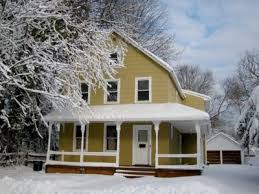
Breaking News
 Operation Mockingbird: The CIA lied to you this whole time
Operation Mockingbird: The CIA lied to you this whole time
 American Academy of Pediatrics threatens PARENTAL RIGHTS with federal mandates...
American Academy of Pediatrics threatens PARENTAL RIGHTS with federal mandates...
 Texas AI data centers drain water supply as residents face drought restrictions and shower limits
Texas AI data centers drain water supply as residents face drought restrictions and shower limits
 SpaceX's Crew-11 astronauts arrive at the International Space Station (video)
SpaceX's Crew-11 astronauts arrive at the International Space Station (video)
Top Tech News
 The mitochondria are more than just the "powerhouse of the cell" – they initiate immune...
The mitochondria are more than just the "powerhouse of the cell" – they initiate immune...
 Historic Aviation Engine Advance to Unlock Hypersonic Mach 10 Planes
Historic Aviation Engine Advance to Unlock Hypersonic Mach 10 Planes
 OpenAI CEO Sam Altman Pitches Eyeball-Scanning World ID to Bankers
OpenAI CEO Sam Altman Pitches Eyeball-Scanning World ID to Bankers
 New 3D-printed titanium alloy is stronger and cheaper than ever before
New 3D-printed titanium alloy is stronger and cheaper than ever before
 What is Unitree's new $6,000 humanoid robot good for?
What is Unitree's new $6,000 humanoid robot good for?
 "No CGI, No AI, Pure Engineering": Watch Raw Footage Of 'Star Wars'-Style Speeder
"No CGI, No AI, Pure Engineering": Watch Raw Footage Of 'Star Wars'-Style Speeder
 NASA's X-59 'quiet' supersonic jet rolls out for its 1st test drive (video)
NASA's X-59 'quiet' supersonic jet rolls out for its 1st test drive (video)
 Hypersonic SABRE engine reignited in Invictus Mach 5 spaceplane
Hypersonic SABRE engine reignited in Invictus Mach 5 spaceplane
 "World's most power dense" electric motor obliterates the field
"World's most power dense" electric motor obliterates the field
 The Wearables Trap: How the Government Plans to Monitor, Score, and Control You
The Wearables Trap: How the Government Plans to Monitor, Score, and Control You
How To Heat Your Home With Solar Heating

But adding solar heating isn't always all that easy, especially when that home wasn't designed with solar in mind.
When most people talk about solar heated homes, they're referring to passive solar. In a nutshell, passive solar works by the principle that dark colors absorb light. Since light is energy, the law of the conservation of energy tells us that the light must be converted to some other form of energy. This naturally occurs by converting the sunlight into heat. So, as long as a home is designed with enough windows, a good absorber and sufficient thermal mass, a passive solar heating system will work.
Unfortunately, not all homes lend themselves to passive solar heating. While many can be adapted to receive some benefit from passive solar, there are some with designs or locations that make it cost-prohibitive to modify them for passive solar.



